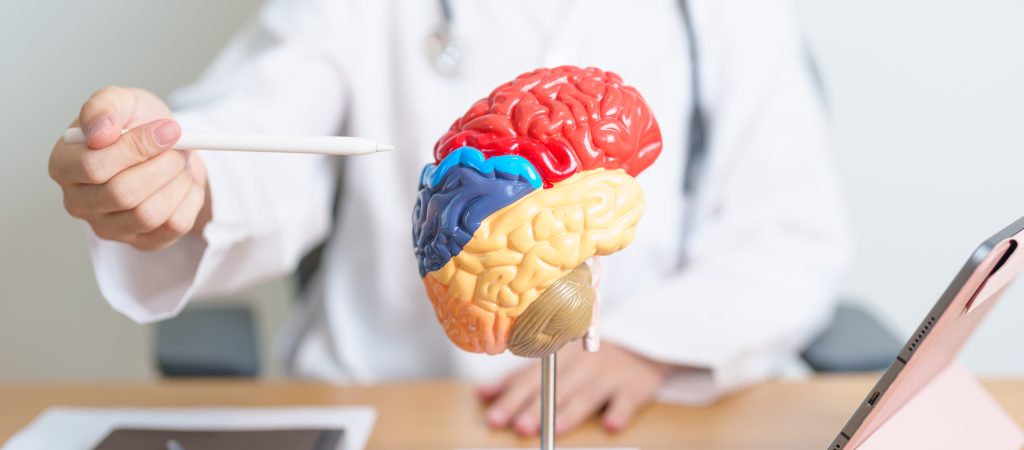Neuroplasticity and Mental Health: How the Brain Adapts and How We Can Support Positive Change
Introduction: The Remarkable Adaptability of the Human Brain
Imagine your brain as a vast, dense forest, with billions of trees representing your neurons, and countless pathways weaving between them—paths that have been forged through years of thoughts, experiences, and habits. For decades, scientists believed that once these neural pathways were established in adulthood, they remained fixed and unchangeable—like concrete roads impossible to redirect.
But what if this forest wasn’t static at all? What if new paths could be carved, unused trails could fade away, and entirely new sections could flourish throughout your entire life?
This is the revolutionary concept of neuroplasticity—the brain’s remarkable ability to reorganise itself by forming new neural connections, strengthening existing ones, and even developing entirely new neurons well into adulthood. It represents perhaps the most profound shift in our understanding of the human brain in modern neuroscience, and it carries immense implications for mental health, personal growth, and human potential.
The discovery that our brains remain malleable throughout our lives has transformed our approach to everything from stroke recovery to depression treatment. It offers a scientifically-backed foundation for something humans have intuitively sensed for centuries: that meaningful change is possible, regardless of age or circumstance.
In this article, we’ll explore the fascinating science of neuroplasticity, examine its profound implications for mental health, and uncover evidence-based strategies that allow us to harness this remarkable capacity for positive change.
The Challenge: When Your Brain Feels Like Your Enemy
For those struggling with mental health challenges, the brain can sometimes feel less like an ally and more like an adversary. Consider these common experiences:
- Persistent negative thought patterns that seem to play on repeat despite your best efforts to think differently
- Emotional reactions that feel automated and beyond your control
- Anxiety responses that activate even when you logically know there’s no threat
- Habits and behaviours that persist despite clear awareness of their harmful effects
- Treatment approaches that provide temporary relief but fail to create lasting change
These experiences often lead to a profound sense of hopelessness—a belief that “this is just how my brain works” or “I’m hardwired this way.” The weight of this perceived permanence can be crushing, particularly for young people who fear a lifetime of struggling with the same mental health challenges.
Many have tried positive thinking, relaxation techniques, medication, or conventional therapy with mixed results. Some experience temporary improvement only to find themselves sliding back into familiar patterns. Others diligently practice coping strategies that help them manage symptoms but never quite address the underlying issues.
“I’ve tried everything to manage my anxiety—meditation apps, breathing exercises, even medication. They help in the moment, but then I’m right back where I started. It feels like my brain is just wired to panic.” — 28-year-old anxiety sufferer
This sense of neurological determinism—that we’re simply stuck with the brain we have—represents one of the most significant barriers to mental health recovery. But as we’ll see, neuroplasticity research offers compelling evidence that this assumption is fundamentally flawed.
Background: From Fixed Organ to Dynamic System
To appreciate the revolutionary nature of neuroplasticity, we need to understand the historical context of brain science.
The Fixed Brain Paradigm
For much of the 20th century, the prevailing scientific view held that the adult brain was essentially fixed and immutable. This perspective, often attributed to prominent neuroanatomist Santiago Ramón y Cajal, suggested that neural pathways established during development became permanently hardwired after critical periods of childhood and adolescence.
This “fixed brain” paradigm led to a somewhat deterministic view of neurological and psychological conditions. If your brain was “wired” for anxiety, depression, or other mental health challenges, the best you could hope for was to manage symptoms rather than fundamentally change the underlying neural architecture.
The Paradigm Shift
Beginning in the 1960s and accelerating through the 1990s, this fixed perspective began to crumble in the face of mounting evidence. Pioneering researchers like Michael Merzenich, Edward Taub, and Alvaro Pascual-Leone demonstrated that the adult brain remains remarkably plastic—capable of significant structural and functional reorganisation throughout life.
Key discoveries that revolutionised our understanding included:
- Reorganisation after injury: Studies showing how brain regions could take on new functions following damage to other areas
- Learning-induced changes: Research demonstrating structural brain changes in response to learning and practice
- Adult neurogenesis: The discovery that new neurons continue to form in certain brain regions throughout adulthood
- Environment-driven adaptation: Evidence that enriched environments could stimulate brain development at any age
By the early 2000s, neuroplasticity had transitioned from a controversial theory to an established science, fundamentally altering our understanding of the brain’s capacity for change.
The Mechanisms of Change
At its core, neuroplasticity operates through several key mechanisms:
- Synaptic plasticity: The strengthening or weakening of connections between neurons based on activity patterns
- Neurogenesis: The formation of new neurons, particularly in the hippocampus (crucial for learning and memory)
- Sprouting and pruning: The growth of new neural connections and the elimination of unused ones
- Cortical remapping: The reorganisation of functions across the brain’s cortex
These processes follow the neurological principle first articulated by Canadian psychologist Donald Hebb: “Neurons that fire together, wire together.” In other words, neural pathways that activate repeatedly strengthen over time, while those rarely used weaken and may eventually disappear—a process sometimes summarised as “use it or lose it.”
This fundamental understanding provides the scientific foundation for harnessing neuroplasticity to address mental health challenges.

The Science of Neuroplasticity: Understanding the Adaptable Brain
To fully appreciate how neuroplasticity can transform mental health outcomes, we need to delve deeper into the different types of plasticity and how they manifest in the brain.
Types of Neuroplasticity
Neuroplasticity isn’t a single process but rather encompasses several distinct mechanisms:
Structural Plasticity involves physical changes to the brain’s architecture:
- Growth of new neurons (neurogenesis)
- Formation of new synapses (synaptogenesis)
- Strengthening or weakening of existing connections
- Myelination changes that affect signal transmission speed
Functional Plasticity relates to changes in how brain regions operate:
- Reorganisation of which networks activate during specific tasks
- Changes in the efficiency of neural communications
- Shifts in which brain regions control particular functions
Both types work in concert to allow the brain to adapt to changing demands, learn new skills, and potentially overcome challenges—including those related to mental health.
Key Brain Regions in Mental Health and Plasticity
Several brain regions play particularly important roles in both mental health and neuroplasticity:
The Hippocampus:
- Critical for memory formation and emotional regulation
- One of the few brain regions with significant adult neurogenesis
- Often shows volume reductions in depression and stress-related conditions
- Demonstrates remarkable plasticity in response to both positive interventions and stressors
The Amygdala:
- Central to fear processing and emotional responses
- Can become hyperactive in anxiety conditions
- Shows plasticity in response to fear learning and extinction
- Can be “retrained” through various therapeutic approaches
The Prefrontal Cortex:
- Responsible for executive functions, decision-making, and emotional regulation
- Continues developing into early adulthood
- Shows significant plastic changes in response to meditation and cognitive training
- Critical for “top-down” regulation of emotional responses
The Default Mode Network:
- Activates when the mind is wandering or ruminating
- Often overactive in depression and anxiety
- Shows plastic changes in response to meditation and mindfulness practices
- Reorganises with age and experience
Understanding how these regions adapt and change provides the foundation for targeted interventions that can promote positive neuroplasticity.
Neuroplasticity Across the Lifespan
A critical insight from modern neuroscience is that neuroplasticity continues throughout the entire lifespan, though its nature changes with age:
Childhood and Adolescence: During these periods, the brain undergoes massive reorganisation, with “critical periods” of heightened plasticity for various functions. This explains why children learn languages and many skills more easily than adults.
Young Adulthood: Plasticity remains robust, with the prefrontal cortex continuing to develop and refine until around age 25. This ongoing development explains both the creativity and vulnerability of this life stage.
Middle and Older Adulthood: While overall plasticity may decrease, the adult brain retains significant capacity for change. Research shows that older adults can still:
- Learn new skills
- Form new memories
- Recover from brain injuries
- Develop new neural connections
- Benefit from cognitive training
The persistence of neuroplasticity throughout life offers hope for addressing mental health challenges at any age—a stark contrast to earlier deterministic views.
Mental Health Applications: Rewiring for Wellbeing
The science of neuroplasticity has profound implications for understanding and treating various mental health conditions. Let’s explore how brain plasticity relates to common mental health challenges and the evidence for neuroplasticity-based interventions.
Anxiety Disorders and Neuroplasticity
Anxiety disorders involve distinct patterns of brain activity, particularly:
- Hyperactivity in the amygdala and related threat-detection circuits
- Weakened connectivity between the prefrontal cortex and emotional centres
- Reinforced neural pathways that anticipate threat in neutral situations
Neuroplasticity research suggests these patterns aren’t permanent. Studies show that the brain can “unlearn” anxiety responses through:
Fear Extinction Learning: The process by which the brain forms new associations that compete with fear memories, effectively updating threat assessments. This forms the neurobiological basis for exposure therapy, which has strong evidence for treating anxiety disorders.
Cognitive Control Enhancement: Strengthening prefrontal control over emotional reactivity through cognitive training and meditation. Neuroimaging studies show increased prefrontal cortical thickness and improved amygdala regulation following these interventions.
Depression and Neural Adaptation
Depression involves several neuroplastic changes:
- Reduced hippocampal volume and neurogenesis
- Altered connectivity in emotion regulation networks
- Heightened activity in the default mode network associated with rumination
Evidence suggests these changes can be reversed through:
Exercise-Induced Neuroplasticity: Regular physical activity increases brain-derived neurotrophic factor (BDNF), which promotes neurogenesis in the hippocampus. Multiple studies show that consistent exercise can be as effective as antidepressants for some individuals, with brain scans showing restoration of healthy neural patterns.
Cognitive-Behavioural Therapy (CBT): Research shows that successful CBT for depression correlates with specific changes in brain activity, including normalised prefrontal function and reduced hyperactivity in emotional centres.
Trauma and Brain Adaptation
Trauma causes significant neuroplastic changes, including:
- Altered stress response systems
- Hypersensitive threat detection
- Disrupted integration between brain regions involved in memory and emotion
However, the brain’s adaptability offers pathways to recovery:
Memory Reconsolidation: When traumatic memories are activated, they temporarily become malleable before being restored. This reconsolidation window provides an opportunity to update these memories with new, less distressing associations—a process leveraged in therapies like Eye Movement Desensitisation and Reprocessing (EMDR).
Interoceptive Awareness Training: Practices that enhance awareness of internal bodily sensations help trauma survivors reconnect with their physical experience in a safe context, promoting integration between brain regions that may have become disconnected following trauma.

The Role of Neuroplasticity in Recovery and Resilience
Beyond specific conditions, neuroplasticity underlies general mental resilience—the ability to adapt to stress and recover from adversity. Research shows that individuals with greater cognitive flexibility (a behavioral marker of neural plasticity) demonstrate better stress recovery and lower risk for developing mental health conditions following difficult life events.
This suggests that interventions enhancing neuroplasticity may serve not only as treatments but also as preventative measures that build psychological resilience before challenges arise.
Evidence-Based Methods to Harness Neuroplasticity
With a solid understanding of the science, we can now explore specific, evidence-based approaches to promote positive neuroplasticity for mental health. These techniques leverage the brain’s natural adaptive mechanisms to create lasting change.
Mindfulness and Meditation
Perhaps no single approach has stronger evidence for promoting beneficial neuroplasticity than mindfulness meditation. Regular practice creates measurable changes in brain structure and function:
- Increased grey matter in regions responsible for attention, emotional regulation, and perspective-taking
- Reduced activity in the default mode network associated with rumination
- Enhanced connectivity between prefrontal regions and emotional centers
- Improved stress regulation through changes to the hypothalamic-pituitary-adrenal axis
A landmark study by Harvard researchers found that just eight weeks of mindfulness meditation produced measurable increases in grey matter concentration in the hippocampus, along with reductions in amygdala volume—changes associated with improved stress management and emotional regulation.
Practical Application: Even 10-15 minutes of daily mindfulness practice can trigger neuroplastic changes. Focus on consistency rather than duration, using structured guidance from reputable apps or programs.
Cognitive Training Approaches
Cognitive training leverages the principle that challenging the brain in specific ways promotes targeted neuroplastic changes:
Cognitive Behavioral Therapy (CBT) works partly by strengthening neural pathways that support realistic thinking while weakening catastrophic thought patterns. Neuroimaging studies show that successful CBT treatment correlates with specific changes in brain connectivity and function.
Cognitive Remediation approaches target specific cognitive skills through repeated practice, promoting neuroplasticity in associated brain networks. These approaches have shown promise for conditions ranging from schizophrenia to age-related cognitive decline.
Attention Training techniques strengthen neural networks involved in selective attention and cognitive control, with demonstrated benefits for conditions like ADHD, anxiety, and depression.
Practical Application: Work with qualified health professionals to identify cognitive patterns that may benefit from targeted training. Between sessions, consistent home practice of assigned cognitive exercises reinforces neuroplastic changes.
Physical Exercise
Physical activity powerfully promotes neuroplasticity through multiple mechanisms:
- Increased BDNF production, stimulating neurogenesis and synaptogenesis
- Enhanced cerebral blood flow, delivering more oxygen and nutrients to brain cells
- Reduced inflammation, which can inhibit neuroplasticity
- Release of growth factors that support neural health and adaptation
Research indicates that both aerobic exercise and resistance training contribute to beneficial brain changes, with some studies showing increased hippocampal volume following regular aerobic exercise programs.
Practical Application: Aim for at least 150 minutes of moderate-intensity aerobic activity weekly, combined with twice-weekly strength training. Even brief, high-intensity interval training shows neuroplastic benefits for those with limited time.
Learning and Cognitive Challenge
Learning new skills creates perhaps the most direct demand for neuroplasticity:
- Learning complex motor skills (like playing an instrument or dance) increases connectivity between motor regions and cognitive control networks
- Acquiring a new language strengthens connections between various language areas and enhances cognitive flexibility
- Mastering spatial navigation (without GPS) promotes hippocampal neurogenesis and volume
The key appears to be novelty and progressive challenge—activities that continually push the boundaries of current ability.
Practical Application: Commit to learning something new that combines cognitive and physical elements. Progress should feel challenging but achievable, with difficulty increasing as skills improve.
Social Connection and Enriched Environments
Human brains evolved in social contexts, and meaningful social interaction promotes positive neuroplasticity:
- Quality social connections increase levels of oxytocin and other neurochemicals that support neural growth
- Complex social environments require sophisticated cognitive processing that strengthens neural networks
- Positive social feedback activates reward circuits that reinforce beneficial neural adaptations
Research in both humans and animals demonstrates that enriched social environments promote neurogenesis and synaptogenesis throughout life.
Practical Application: Prioritise authentic social connections that involve emotional depth and intellectual engagement. Join groups centred around shared interests or values to combine social benefits with learning.
Nutrition and Sleep Optimisation
The brain’s physical substrate requires proper nourishment and rest to support neuroplasticity:
Nutrition influences neuroplasticity through:
- Omega-3 fatty acids that support neural membrane health and function
- Antioxidants that protect neurons from oxidative stress
- B vitamins crucial for various aspects of brain function
- Polyphenols (found in berries, dark chocolate, etc.) that enhance neurogenesis and BDNF production
Sleep is critical for consolidating neuroplastic changes through:
- Memory consolidation during various sleep stages
- Clearance of metabolic waste via the glymphatic system
- Regulation of plasticity-related proteins and gene expression
- Restoration of energy reserves needed for neuroplastic processes
Practical Application: Focus on a Mediterranean-style diet rich in plant foods, seafood, and healthy fats. Prioritize consistent sleep schedules that allow for 7-9 hours of quality rest, with particular attention to sleep hygiene practices.
The Counterintuitive Nature of Neuroplastic Change
While the concept of neuroplasticity offers tremendous hope, effectively harnessing it often requires counterintuitive approaches that challenge common assumptions about personal change.
Beyond Positive Thinking: The Limitations of Cognitive Approach Alone
A common misconception is that positive thinking alone can rewire the brain. While thought patterns certainly influence neural activity, lasting neuroplastic change typically requires more than cognitive effort:
- Emotional engagement is crucial – the brain prioritises emotionally significant experiences for neuroplastic change
- Embodied experience often drives deeper neural reorganisation than abstract thinking
- Behavioural activation creates concrete feedback loops that strengthen new neural patterns
This explains why someone might intellectually understand their anxiety is irrational yet continue experiencing panic attacks—cognitive insight alone often fails to create sufficient neuroplastic change in emotional brain circuits.
Embracing Discomfort: The Necessity of Challenge
Perhaps counterintuitively, discomfort and challenge are essential ingredients for positive neuroplasticity:
- Moderate stress actually promotes neuroplasticity through the release of certain neurochemicals
- Pushing beyond comfort zones signals to the brain that current neural configurations are insufficient
- Recovery from challenge strengthens neural resilience and adaptability
This principle explains why exposure therapy—which involves facing feared situations—often proves more effective for anxiety than avoidance strategies. By deliberately engaging with well-calibrated discomfort, we trigger the neuroplastic processes necessary for lasting change.
The Myth of Quick Fixes: Timing and Persistence
Another misconception involves the timeline of neuroplastic change:
- Critical periods of heightened plasticity exist throughout development
- Adult neuroplasticity requires more repetition and consistency than childhood learning
- Consolidation of changes occurs over weeks and months, not days
- Maintenance of gains demands ongoing engagement with new patterns
This explains why brief interventions often yield temporary results that fade without continued practice—the brain requires persistent signals to maintain neuroplastic adaptations.
From Managing to Rewiring: A Paradigm Shift
Perhaps most radically, neuroplasticity research suggests we may need to shift from merely managing mental health symptoms to actually rewiring the underlying neural patterns:
- Compensatory strategies may provide relief but don’t necessarily create fundamental change
- Transformative approaches target root neural patterns through various modalities
- Integrated interventions that combine cognitive, emotional, social, and physical elements often yield more profound neuroplastic change
This perspective offers hope that real transformation—not just better coping—is possible for many struggling with mental health challenges.
Practical Applications: Neuroplasticity in Action
To illustrate the real-world impact of neuroplasticity-informed approaches, let’s examine several evidence-based applications across different contexts.
Case Example: Neuroplasticity in Anxiety Treatment
Research published in the Journal of Neuroscience demonstrated how exposure therapy for specific phobias creates measurable changes in brain function:
Participants with arachnophobia underwent a two-hour exposure therapy session where they gradually approached and eventually touched a live spider. Brain scans before and after treatment showed:
- Decreased activation in the amygdala and insula when viewing spider images
- Increased connectivity between the prefrontal cortex and amygdala
- These neural changes correlated with reduced fear responses and persisted at six-month follow-up
This study illustrates how a relatively brief but intense intervention can produce lasting neuroplastic changes in emotional processing circuits.
Multimodal Approaches: Maximising Neuroplastic Potential
Research increasingly suggests that combining multiple neuroplasticity-promoting strategies yields synergistic benefits:
A landmark study compared four groups of participants:
- Aerobic exercise only
- Cognitive training only
- Combined exercise and cognitive training
- Control group
The combined intervention group showed significantly greater improvements in cognitive function and larger increases in brain-derived neurotrophic factor (BDNF) than either single-intervention group, suggesting that different neuroplasticity pathways can complement each other.
Five Practical Neuroplasticity Exercises with Evidence-Based Benefits
- Attention Switching Practice
- Task: Set a timer for 5 minutes. Alternate between focusing completely on your breath for 30 seconds, then shifting to focus completely on sounds in your environment for 30 seconds.
- Neuroplastic benefit: Strengthens cognitive control networks and improves attentional flexibility, with research showing enhanced prefrontal activation following consistent practice.
- Sensory Enrichment
- Task: Spend 10 minutes exploring a familiar environment using a non-dominant sense (e.g., close your eyes and navigate by touch and hearing).
- Neuroplastic benefit: Promotes cross-modal cortical reorganisation and enhances sensory processing capacity, with studies showing expansion of cortical areas representing practised senses.
- Mental Rotation Training
- Task: Practice mentally rotating 3D objects for 10 minutes daily (using apps, books, or physical objects).
- Neuroplastic benefit: Strengthens visuospatial processing networks and promotes connectivity between brain hemispheres, with research showing transfer effects to other cognitive domains.
- Non-Dominant Hand Activities
- Task: Practice writing, brushing teeth, or using utensils with your non-dominant hand for 5 minutes daily.
- Neuroplastic benefit: Creates new motor cortex connections and promotes interhemispheric communication, with studies showing increased cortical thickness in motor regions following consistent practice.
- Spaced Retrieval Practice
- Task: Learn new information, then test yourself at increasingly longer intervals (1 hour, 1 day, 3 days, 1 week).
- Neuroplastic benefit: Enhances memory consolidation processes and strengthens hippocampal-cortical connections, with research showing superior retention compared to massed practice.
Future Horizons: Emerging Trends in Neuroplasticity Research
As our understanding of neuroplasticity continues to evolve, several emerging directions show particular promise for mental health applications.
Technological Advances in Measuring and Enhancing Neuroplasticity
New technologies are revolutionising our ability to monitor and promote neuroplastic change:
Real-Time Neurofeedback allows individuals to observe and gradually modify their own brain activity patterns. Advanced systems now provide feedback on connectivity between brain regions, potentially allowing more targeted neuroplastic interventions.
Non-Invasive Brain Stimulation techniques like transcranial magnetic stimulation (TMS) and transcranial direct current stimulation (tDCS) can temporarily increase or decrease activity in specific brain regions, potentially creating windows of enhanced plasticity during which therapeutic interventions might prove more effective.
Virtual Reality Therapy combines immersive environments with precise control over exposure parameters, allowing for finely calibrated neuroplasticity-promoting experiences that would be difficult or impossible to create in real-world settings.
Personalised Approaches to Neuroplasticity
Research increasingly suggests that neuroplastic potential and optimal interventions vary significantly between individuals:
Genetic factors influence both baseline neuroplasticity and response to specific interventions, with variants in genes like BDNF and COMT playing particularly important roles.
Age-related differences in neuroplastic mechanisms mean that optimal approaches may differ substantially across the lifespan.
Individual brain connectivity patterns can predict which interventions are likely to yield the greatest neuroplastic benefits for a specific person.
These insights are driving a shift toward precision approaches that match neuroplasticity interventions to individual neurobiological profiles.
Potential Paradigm Shifts in Mental Health Treatment
The continued integration of neuroplasticity science may fundamentally transform mental health care:
Preventative Neuroplasticity approaches might eventually be incorporated into educational and public health programs, building neural resilience before mental health challenges emerge.
Transdiagnostic Neuroplasticity Targets may provide more effective treatment approaches than current diagnostic categories, focusing on specific neural patterns that cut across traditional disorder boundaries.
Integration of Physical and Mental Health approaches seems inevitable as we better understand the bidirectional relationship between body systems and brain plasticity.
These developments suggest a future where neuroplasticity principles inform not just treatment but the entire conceptual framework of mental health care.
Conclusion: The Hope and Promise of the Adaptable Brain
As we’ve explored throughout this article, the science of neuroplasticity represents nothing less than a revolution in our understanding of the brain and its potential for change. The discovery that our neural architecture remains adaptable throughout life offers profound hope for anyone struggling with mental health challenges.
The evidence is clear: our brains are not fixed circuits destined to operate in the same patterns forever. Rather, they are dynamic, responsive organs continuously reshaping themselves based on our experiences, behaviours, and practices. This malleability exists not just in childhood but continues—albeit in different forms—throughout our entire lives.
For those feeling trapped in anxiety, depression, trauma responses, or other mental health challenges, this understanding provides both hope and a roadmap. The neural patterns underlying these difficulties are not permanent fixtures but adaptable networks that can be modified through targeted approaches that leverage the brain’s natural plasticity.
The forest analogy we began with now takes on new meaning. Those well-worn paths of thought, emotion, and behaviour can indeed be changed. Little-used trails can fade away. New routes can be forged. And entirely new regions of possibility can flourish with the right conditions and practices.
This is not to suggest that harnessing neuroplasticity is easy or quick. Meaningful neural reorganisation typically requires consistency, appropriate challenge, and often professional guidance. However, the fundamental message of neuroplasticity research is profoundly encouraging: change is possible at any age, regardless of how long established patterns have been in place.
As research in this field continues to advance, we can expect even more sophisticated and effective approaches for promoting positive neuroplasticity. But even with our current knowledge, we have powerful tools at our disposal—from mindfulness practices to cognitive training, from physical exercise to social engagement—that can help reshape the brain toward greater well-being.
Perhaps most importantly, the science of neuroplasticity provides a biological foundation for hope—not the vague, wishful thinking kind of hope, but hope grounded in rigorous evidence about the brain’s remarkable capacity for adaptation and renewal.
Call to Action: Engaging with Neuroplasticity for Better Mental Health
If you’re inspired to explore how neuroplasticity might support your mental health journey, consider these next steps:
- Start with a single, consistent practice that promotes neuroplasticity—perhaps daily mindfulness meditation, regular physical exercise, or a specific cognitive challenge. Remember that consistency matters more than duration or intensity, especially at first.
- Consider consulting healthcare professionals with expertise in neuroplasticity-informed approaches. Psychologists, psychiatrists, and other mental health providers increasingly incorporate these principles into their work and can provide personalised guidance.
- Be patient and persistent with your neuroplasticity practices. Remember that meaningful neural reorganisation typically develops over weeks and months, not days. Track subtle changes in your experience rather than expecting immediate transformation.
- Expand your knowledge about brain health and neuroplasticity through reputable resources from organisations like the Australian Psychological Society, university research centres, and health education platforms.
- Share what you learn with others who might benefit. The concepts of neuroplasticity offer hope and practical direction for many people struggling with mental health challenges.
The science is clear: your brain is not static but remarkably dynamic, capable of significant change throughout life. By engaging with evidence-based practices that promote positive neuroplasticity, you can actively participate in reshaping neural patterns toward greater wellbeing and resilience.
Note: This article provides educational information only and is not intended as medical advice. Always consult qualified healthcare professionals for personalized guidance regarding mental health concerns.



